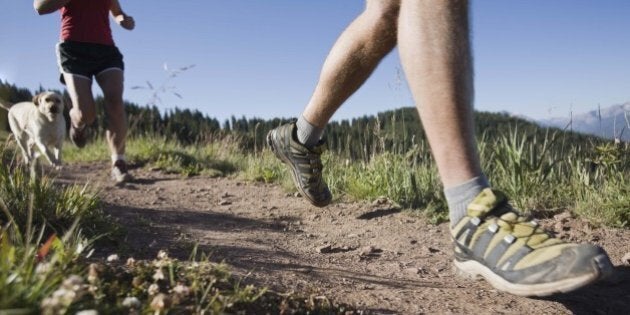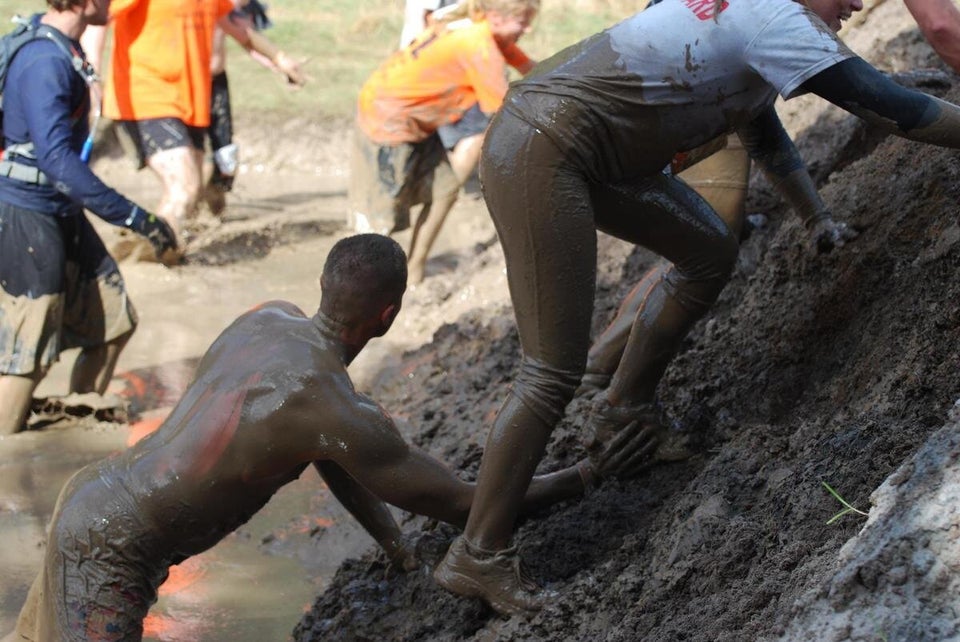
Running is one of the few great activities that can cause both euphoric pleasure and mind-numbing pain at the same time. If there's one thing worse than a running injury, it's never reaching your true potential as an athlete.
Don't think you have what it takes to be a high-performance runner? In fact, the human body is a running machine. Our exceptional ability to run is one of the key reasons humans are here on Earth today.
Evolution has turned us into endurance runners, according to research led by Harvard paleontologist Daniel Liberman. Long before the invention of weapons, humans would hunt by running down their prey. Since a quadruped can't pant while galloping to cool itself down, humans were able to outlast their prey by keeping cool through sweat.
Every one of us is built with many of these incredible running adaptations. For example:
- Short toes keep your foot stable and allow you to run without straining the toes.
- Arches in your feet act as springs to store and release energy, helping to propel you forward with less effort.
- Achilles tendons are super-elastic and also store and release energy, specifically when running.
- Gluteus maximus, also known as your butt, connects the legs and hips and is specially designed to stabilize the trunk when running.
A quick way to fail this system is to tie up your perfectly designed foot in a clunky, restrictive shoe.
Using evolution to your advantage
When you spend a large part of your day in over-supportive shoes with raised heels, your body is restricted and adapts to the conditions. It's not long before you end up with weaker feet, collapsed arches, and shorter heel cords, robbing you of your ability to run safely and efficiently.
Heeled shoes also force you to land on your heels as you run, known as heel striking. This transfers a massive collision force through the body at each step. "It's like someone hitting you on the heel with a hammer two to three times your body weight," says Lieberman.
Being a high performance athlete requires you to use the evolutionary design of your body to your advantage.
One way to do this is by running barefoot. Barefoot running allows you to land where it's comfortable; on the ball of your foot. Minimizing the impact force with a gentle landing, beginning at the forefoot and spreading evenly through the legs, prevents you from wasting energy on movement that doesn't propel you forward. This is the exact motion that feels most natural when you run in your bare feet.
Of course, there's much more to good running mechanics. Yet, optimal foot placement and development helps set the stage for movement throughout the entire body.
The bare foot alternative
When going barefoot isn't an option, try a pair of minimalist shoes. These have flat, thin soles, and wide or individual toe boxes. They provide you with a barefoot feel that promotes good form and allows you to strengthen your feet, while protecting you from injury and infection at the same time.
This is especially important for athletes running on rugged terrain such as obstacle courses. Running through the rocky wilderness, up slippery walls and over blistering fire pits requires a little more protection than your delicate feet.
Of the minimalist shoes I've tried, my favourite for trail runs are the Vibram FiveFingers Spyridon MR, specifically designed for mud runs. Out on the trails, I like to focus on keeping my breathing slow and calm, keeping an easy stride and enjoying the scenery. Not only do the shoes improve my running efficiency, but they help clear my mind from worry about slipping or stepping on something painful at every step.
If you've never tried it, trail running with minimalist shoes has a completely different feel. The foot feels much lighter and more agile, but is well-protected and maintains flexibility. If you're anything like me and like to head off trail, balance on logs and run through the mud, then these are some key features you'll want to look out for.
That said, it's important to keep in mind that a minimalist shoe itself is not a miracle cure. You can unleash your natural abilities and maximize running performance, but it's going to take time and consistent effort.
If you're trying a pair for the first time, give your feet a chance to adapt by integrating a gradual transition for at least five weeks. Start with 10 to 20 per cent of your normal running distance in your new minimalist shoes and increase by 10 per cent each week.
Listening to your body at each step is the key to a smooth transition. By being aware of the danger signals in your body and training it to move well, not only will you reduce your risk of injury, but you may find yourself running faster and longer then you ever thought possible.
Follow HuffPost Canada Blogs on Facebook
MORE ON HUFFPOST:
